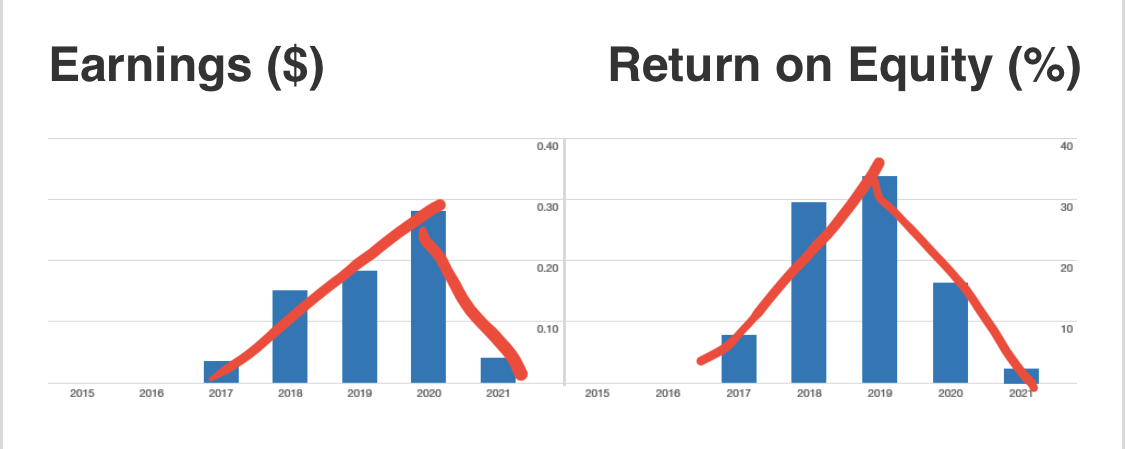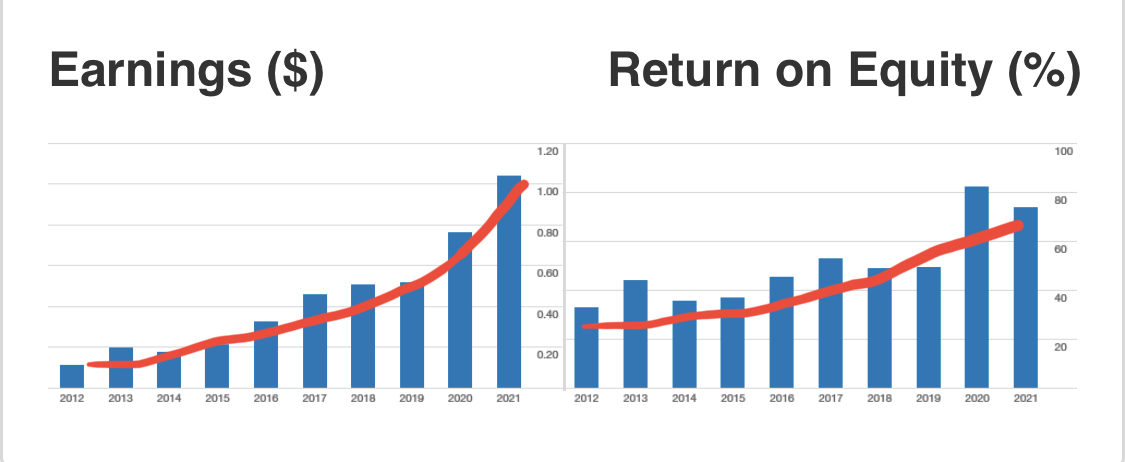Just another thing I forgot to mention on ROE in my last straw. ROE is even more useful when you look at the trend, including forecast ROE. The trend can be a good indicator of when to buy into, or get out, of a business. Here are the historical ROE trends for two ASX retailers:


I have owned both of these retailers in the last 3 years. One I have sold out of, while the other i have been accumulating, and is now in the top 10 by weight in my SMSF (and one of my largest holdings on Strawman). One is Kogan and the other is Nick Scali. Can you pick which chart belongs to which business?
I’ll be keeping a close eye on the second chart to see if that small dip in 2021 continues to trend down. That could be a signal to get out.
Cheers,
Rick

